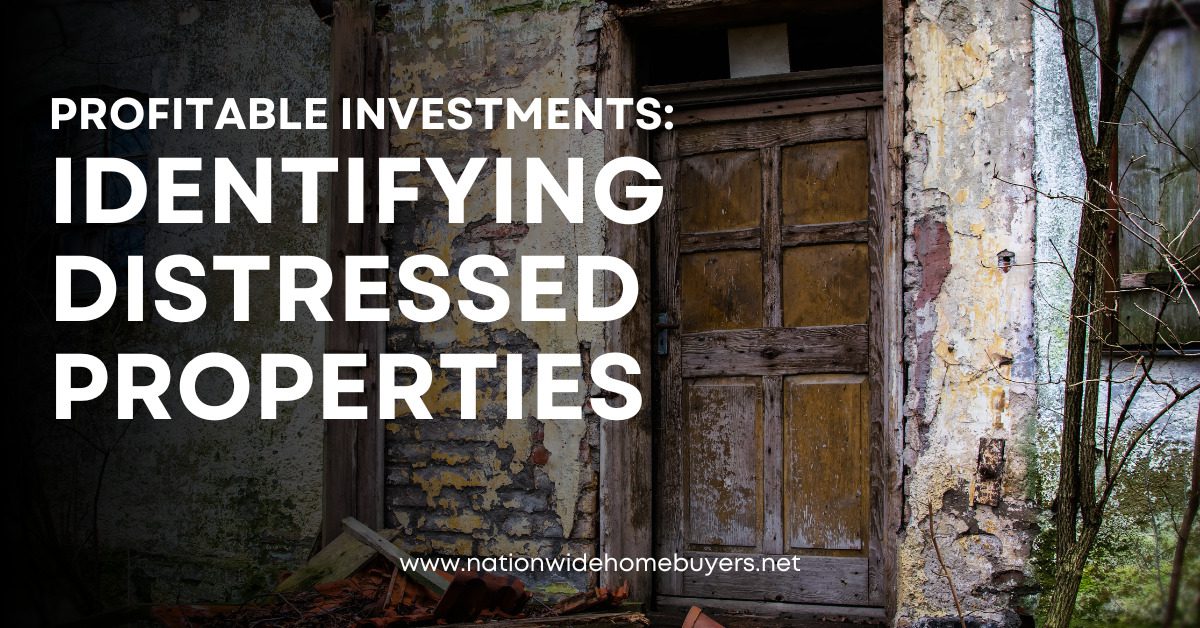Are you interested in exploring the world of real estate investment and finding great opportunities? Distressed properties can be a hidden treasure for investors looking to make money. In this blog, we’ll guide you through the process of identifying distressed properties and turning them into profitable investments. From understanding what distressed properties are to evaluating their potential, we’ll cover it all step by step.
Understanding Distressed Properties:
To start your journey towards profitable investments, it’s essential to know what distressed properties are. These properties usually have financial or structural issues, making them undervalued in the market. These issues could range from foreclosure and bankruptcy to physical deterioration or legal disputes. Recognizing the types of distressed properties is crucial for a successful investment strategy.
Researching the Market:
Before investing in anything, it’s important to do thorough research. Analyzing local real estate trends and economic indicators will help you find areas with high potential for distressed property opportunities. Keeping an eye on foreclosure rates and vacancy levels can give you valuable insights into potential investment hotspots.
Building a Reliable Network:
Networking is crucial in the real estate industry. Building relationships with real estate agents, property managers, and foreclosure attorneys can lead to exclusive deals on distressed properties. These connections may also provide you with early access to off-market opportunities, giving you an advantage in the market.
Analyzing Property Data:
When dealing with distressed properties, numbers matter. Doing a thorough analysis of property data is critical to understanding if the investment is feasible. Factors like the property’s current market value, repair costs, potential rental income, and resale value should be considered when making your investment decision.
Inspecting the Property:
Seeing the property in person is important. A comprehensive inspection of the distressed property is essential to understand the required repairs and renovations. Hiring a professional inspector can reveal hidden issues that might not be obvious at first glance, helping you avoid costly surprises later on.
Negotiating the Purchase:
Being a good negotiator is vital as an investor. When dealing with distressed properties, sellers are often motivated to close deals quickly. Use this to your advantage and negotiate for a price that aligns with your investment goals. Knowing the property’s condition and market value will give you an edge during the negotiation process.
Securing Financing Options:
Funding a distressed property investment can be challenging, but not impossible. Exploring different financing options, such as hard money loans or private investors, can help you secure the necessary funds quickly. Having a solid business plan and financial projections can instill confidence in potential lenders or partners.
Executing the Renovation Plan:
Once the deal is done, it’s time to start the renovation process. Efficient project management and budget control are essential to ensure a successful transformation of the distressed property. Choosing the right contractors and materials can also significantly impact your investment’s overall profitability.
Marketing and Selling the Property:
As the renovation nears completion, devising an effective marketing strategy to attract potential buyers or renters is crucial. Highlighting the property’s unique features and improvements can make it stand out in a competitive market. Finding a balance between a reasonable asking price and maximizing your return on investment is the key to a profitable sale.




